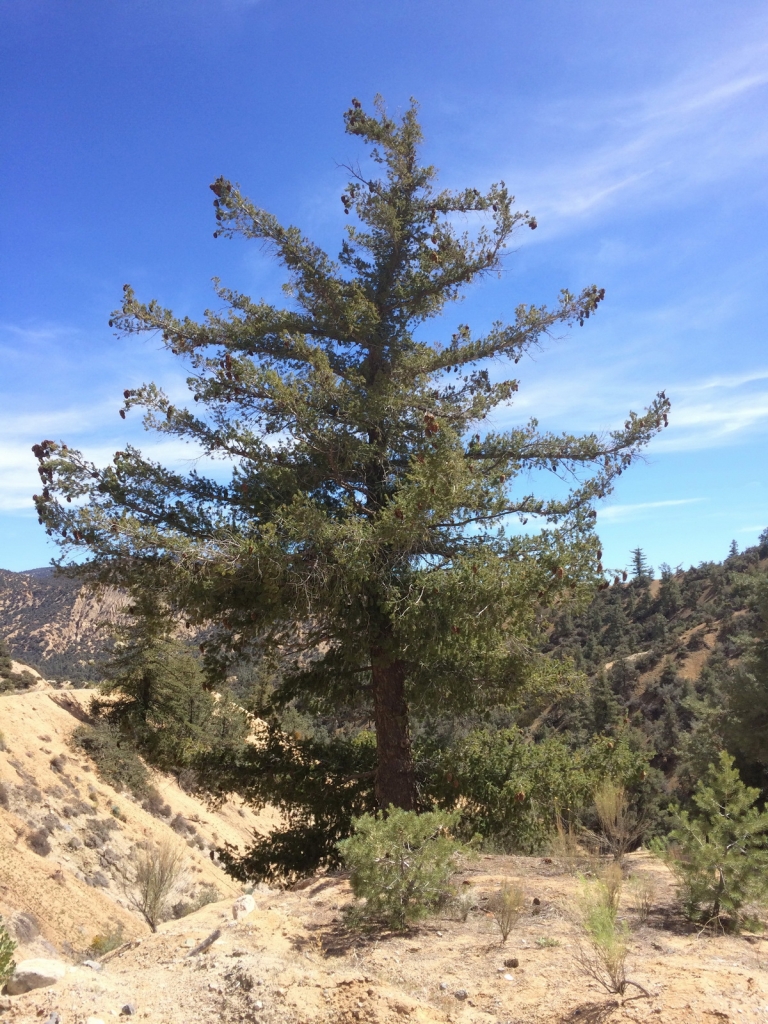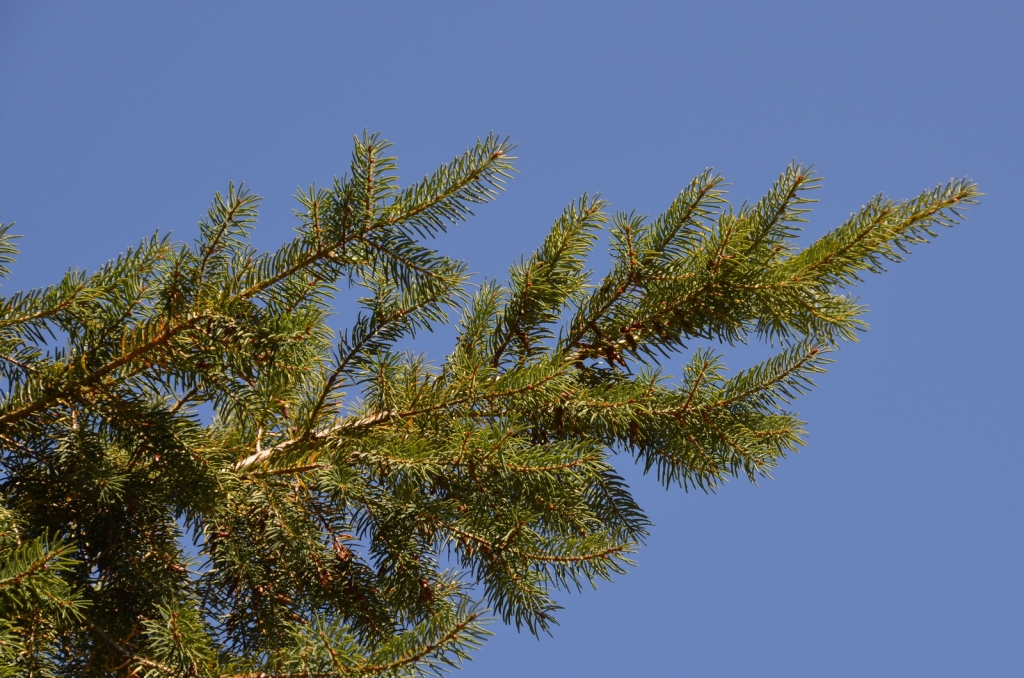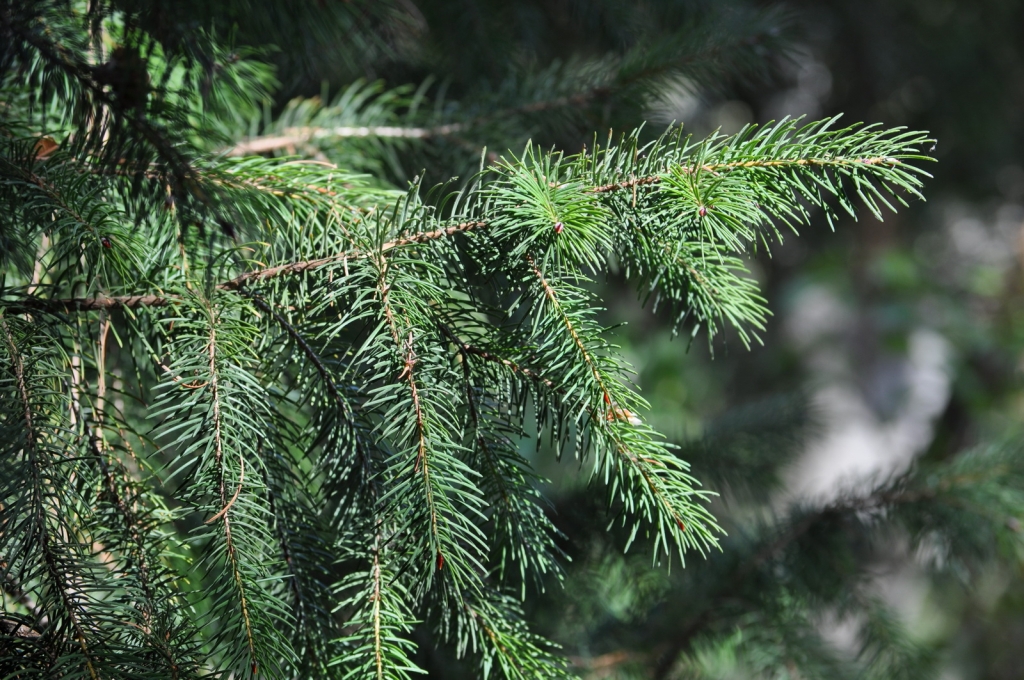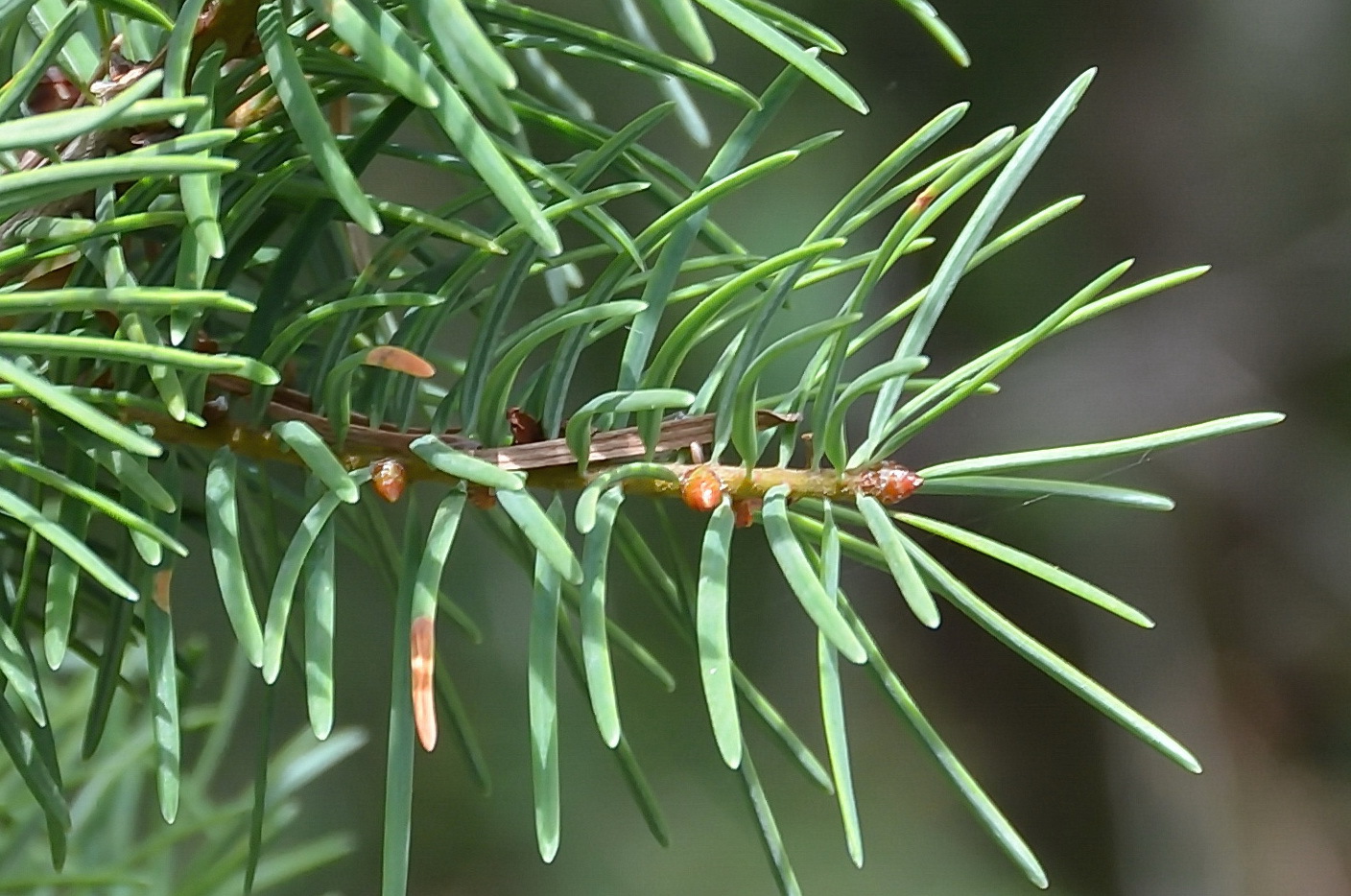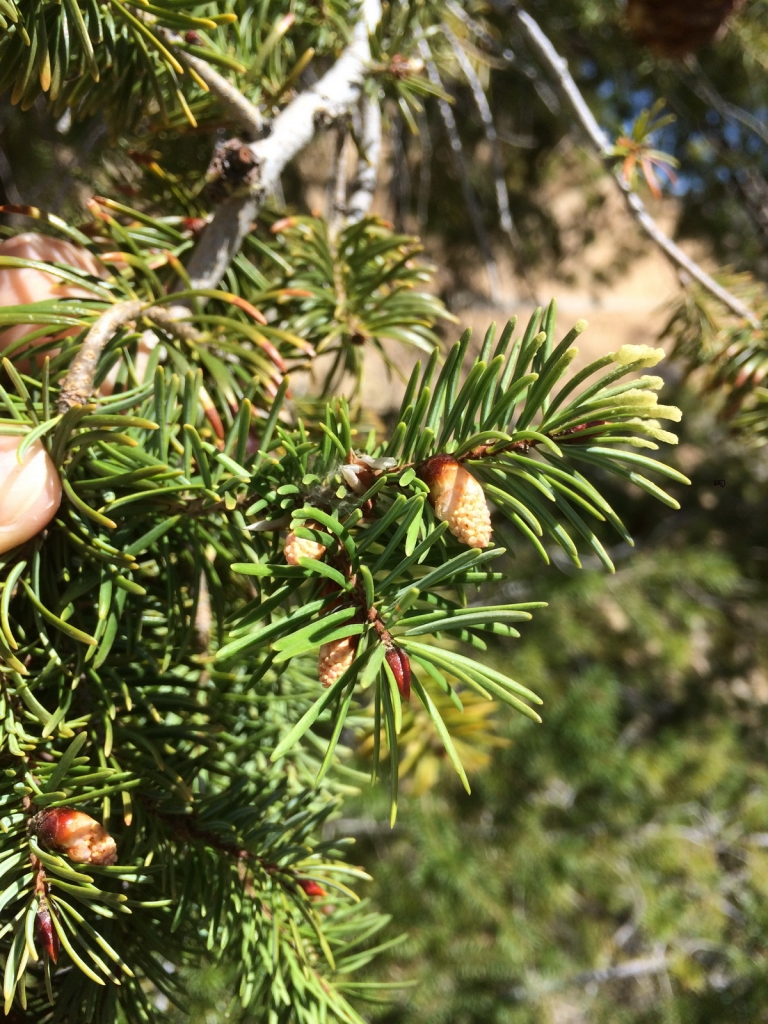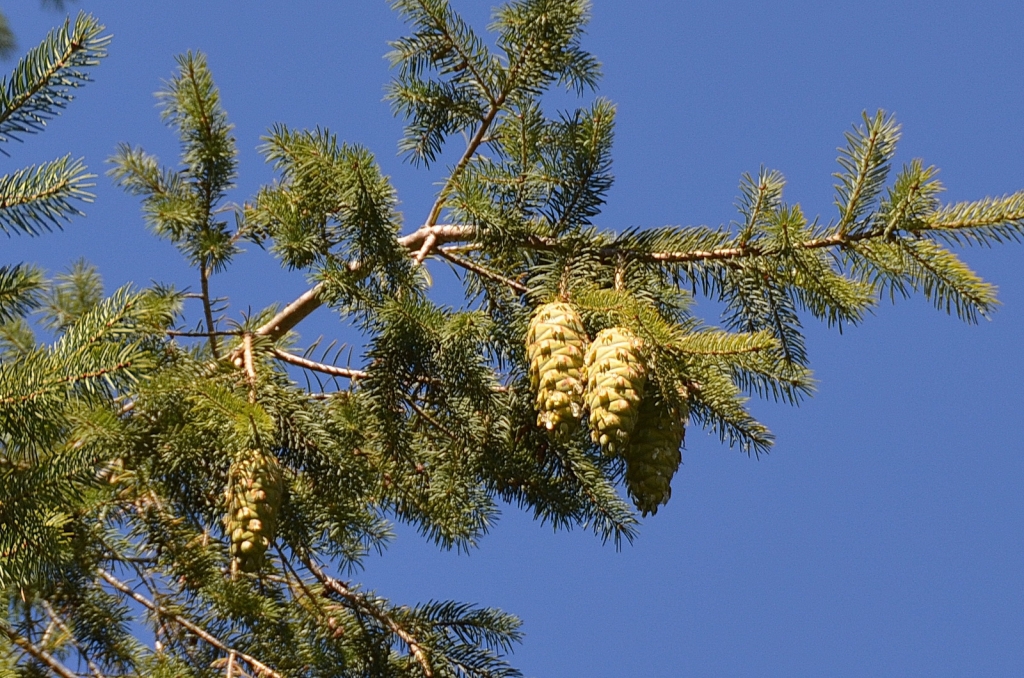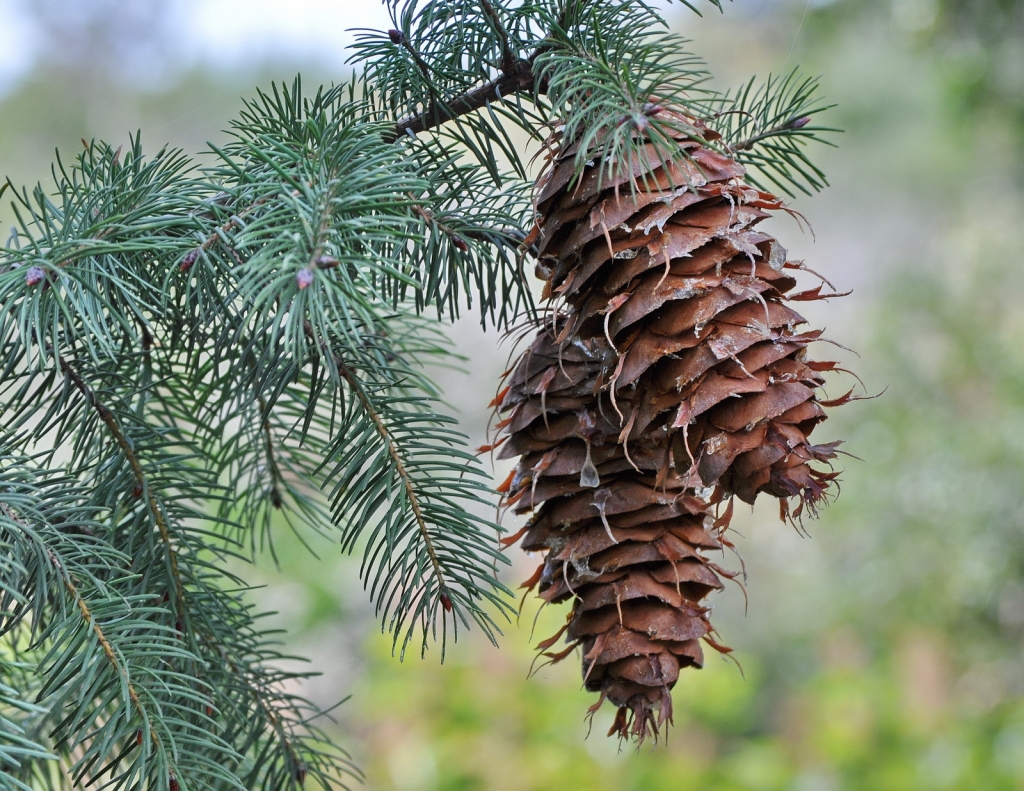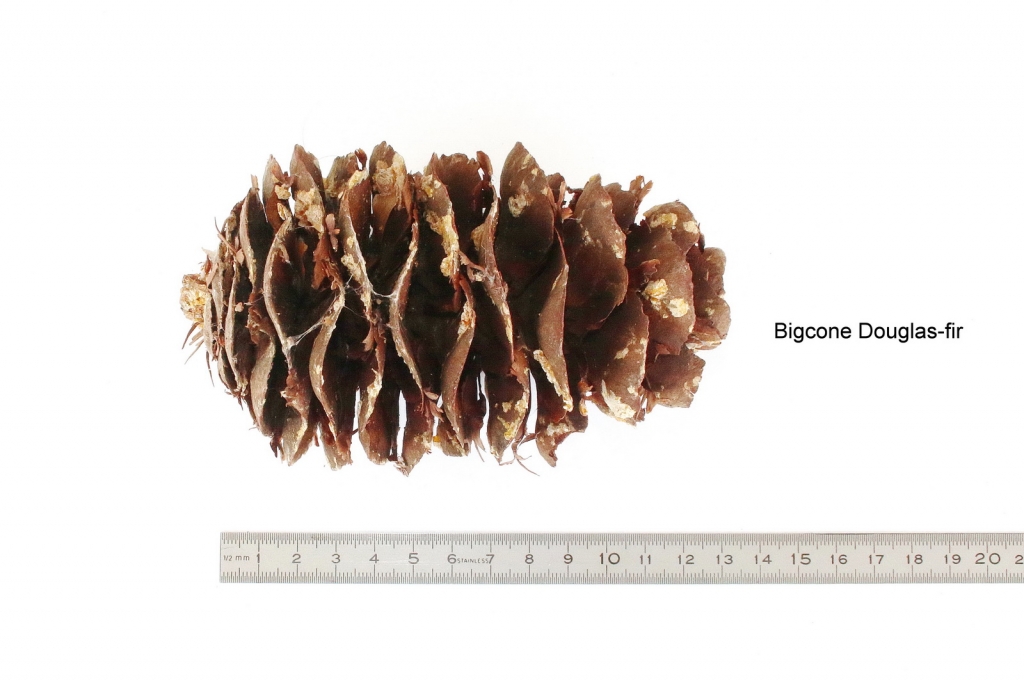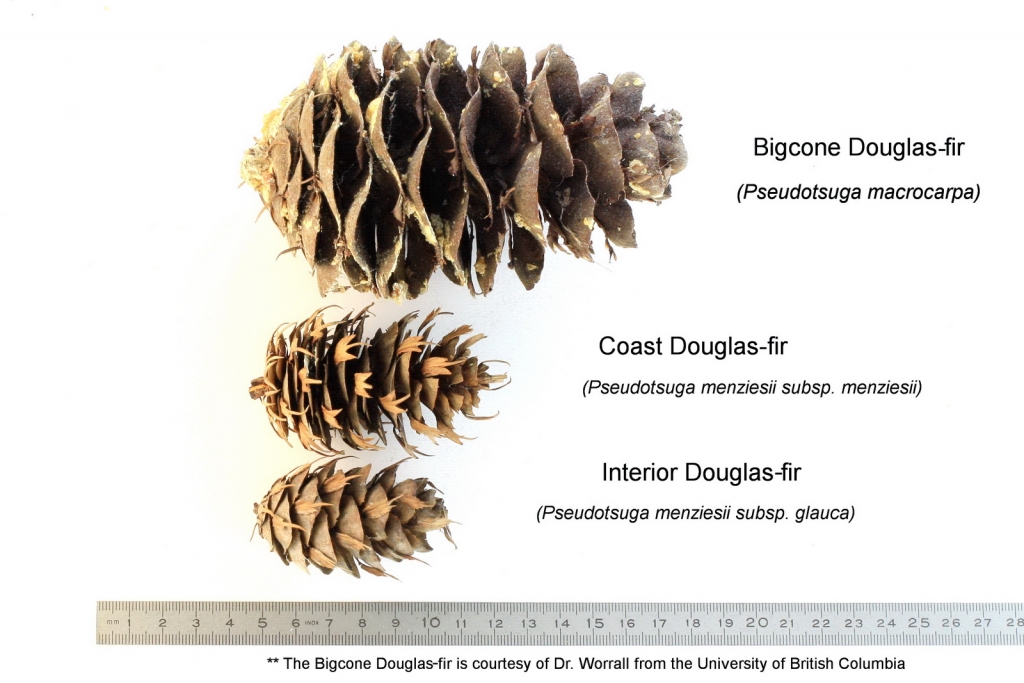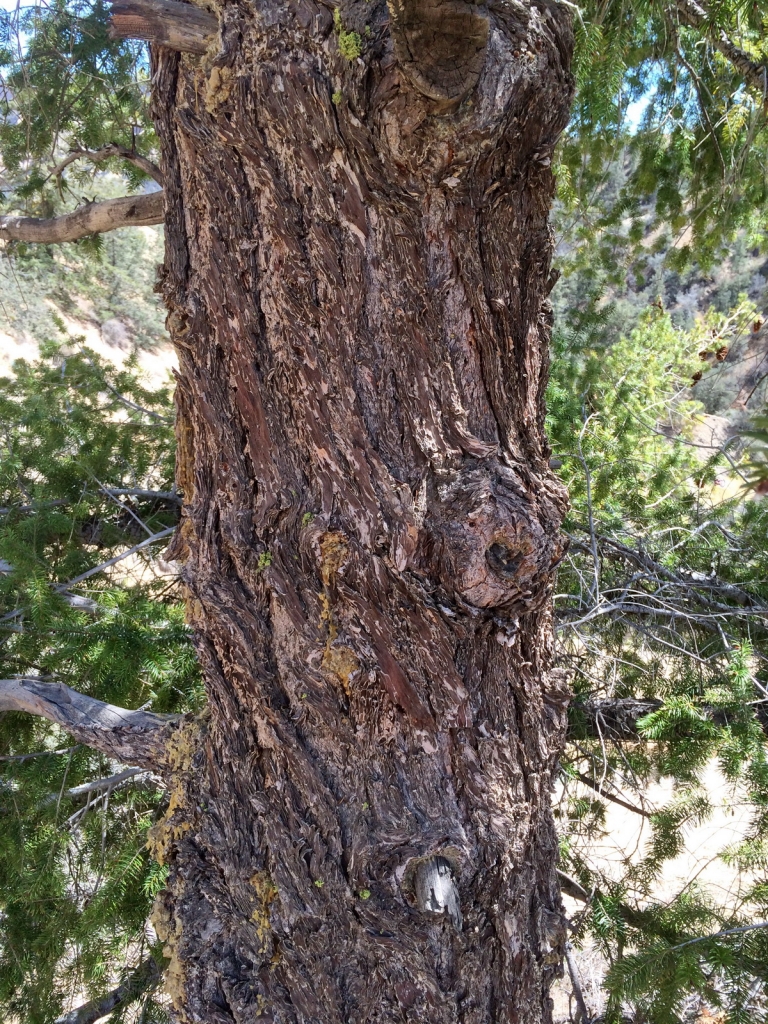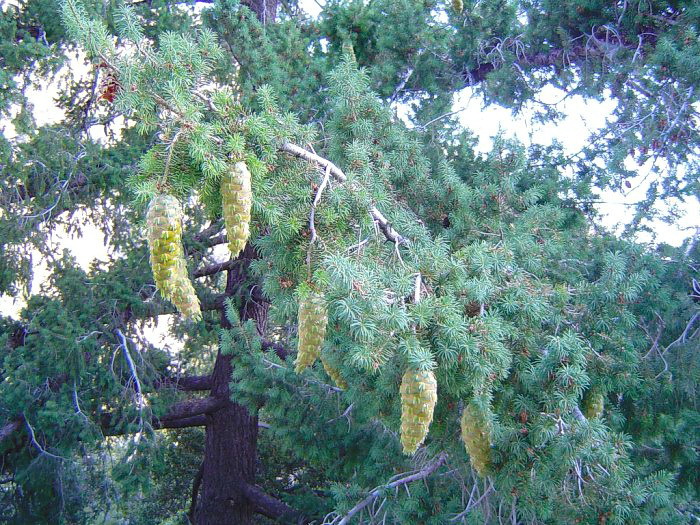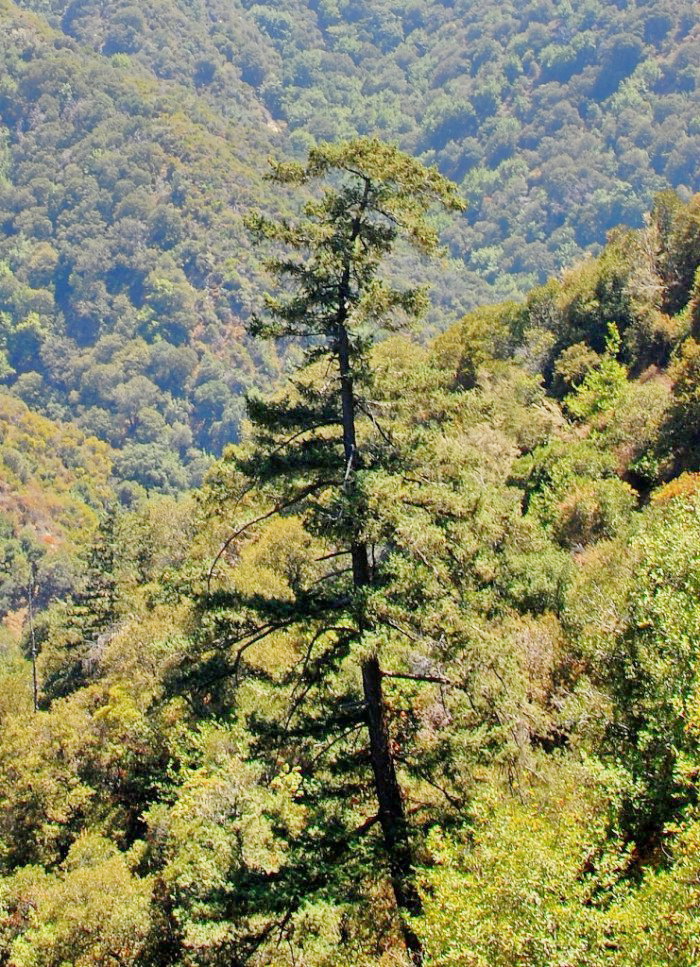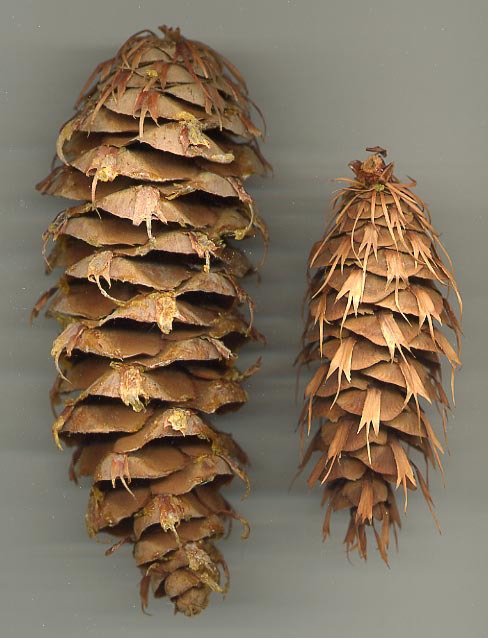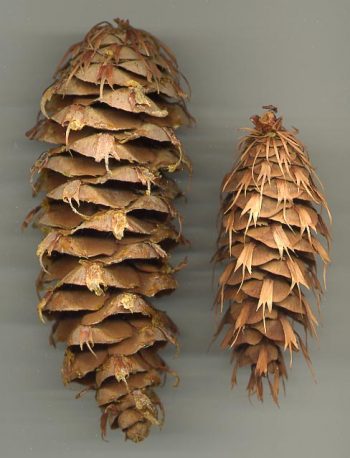
Pseudotsuga macrocarpa, as described in 1889 by (Vasey) Ernst Heinrich Friedrich Meyer (1791 - 1858), in Wald Nordamerica, is commonly known as the Bigcone Douglas-fir; as well as Bigcone spruce, which is the name one often hears when traveling in this tree's native range. This name should be avoided because this tree is not a spruce in any way whatsoever. The species name describes the largest cones seen in this genus.
Description. Bigcone Douglas-fir is an evergreen, coniferous species of tree that grows to mature heights of 50 to 100 feet (15 - 30 m); with a trunk up to 20 to 60 inches (0.5 - 1.5 m) in diameter, measured at breast height. The growth form is straight, with a conical crown from 40 to 100 feet (12 - 30 m) broad, and a strong, spreading root system.
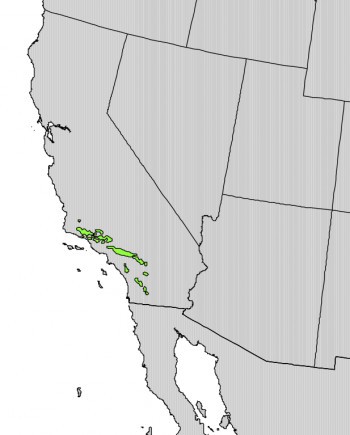
Distribution. This species is native to USA - restricted to the California montane chaparral, woodlands and coastal sage. It prefers a Mediterranean climate, characterized by hot dry summers and wet, mild winters. Annual rainfall over a 30-year period on a Bigcone Douglas-fir site in the San Gabriel Mountains averaged 30 inches (75 cm) and ranged from 10 to 50 inches (25 - 125 cm). One can find Bigcone Douglas-fir at elevations of 1,000 to 8,000 feet (300 - 2,700 m) above sea level. At lower elevations, it occurs near streams in moist, shaded canyons and draws where aspects are mostly north and east. At elevations of 4,440 to 5,600 feet (1,350 - 1,700 m), aspects include south- and east-facing slopes. At these elevations, it also grows on sloping hillsides, ridges, and benches. At higher elevations, it occurs on south and west aspects on all types of terrain. The average angle of slope on which it grows is 35 degrees, ranging from level to 90 degrees, although these extremes are uncommon.
Hardy to UDSA Zone 8 - cold hardiness limit between 10° and 20°F (-12.1° and -6.7°C).

